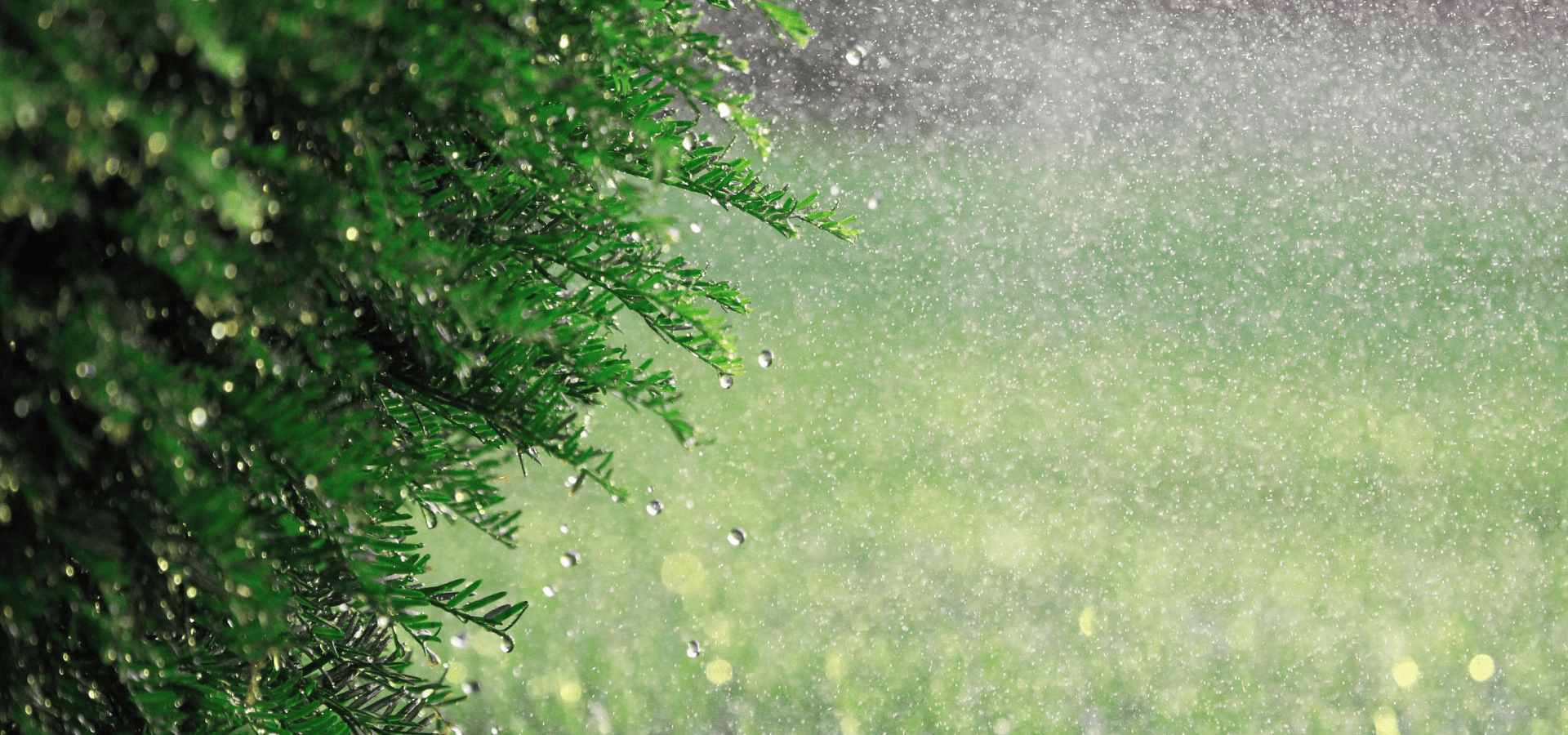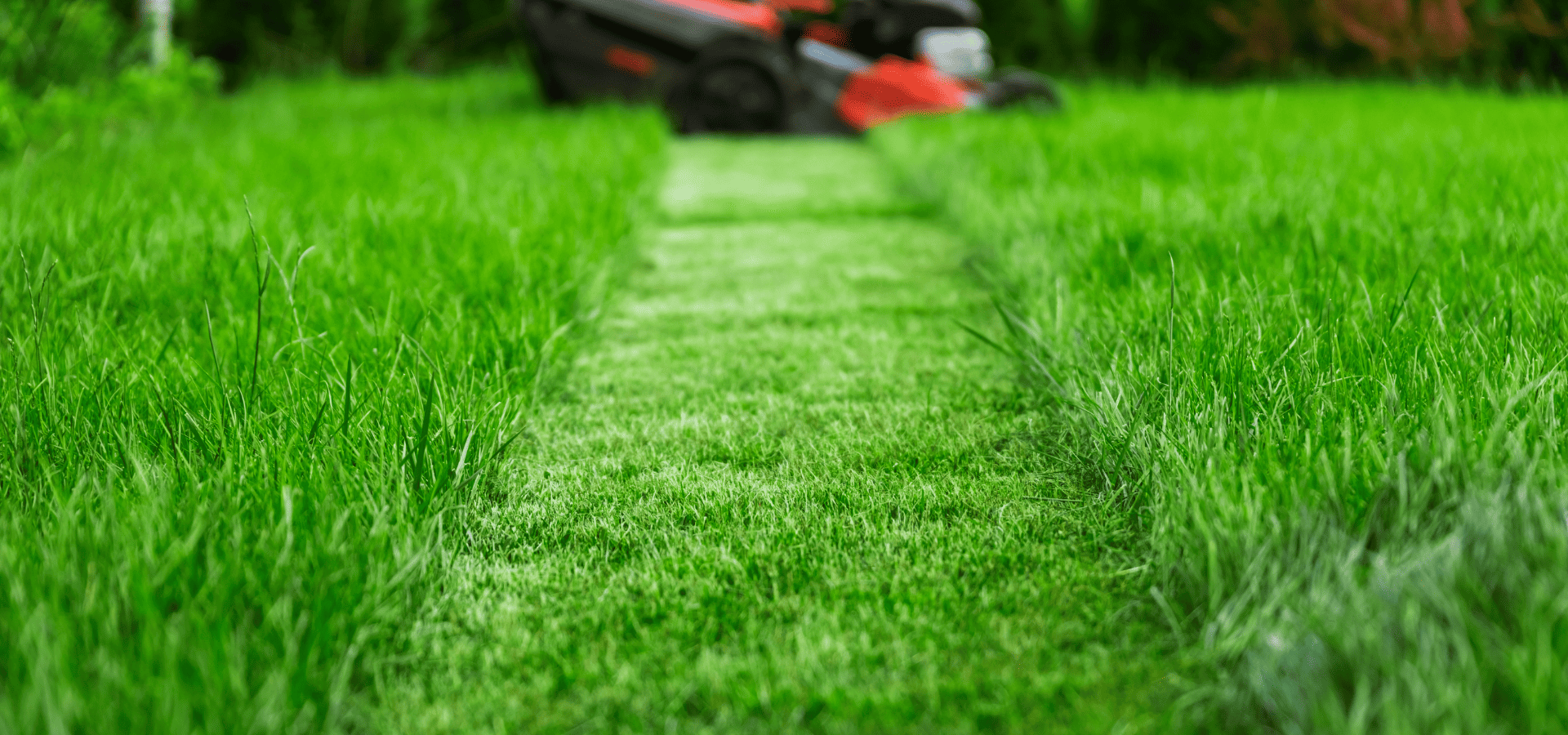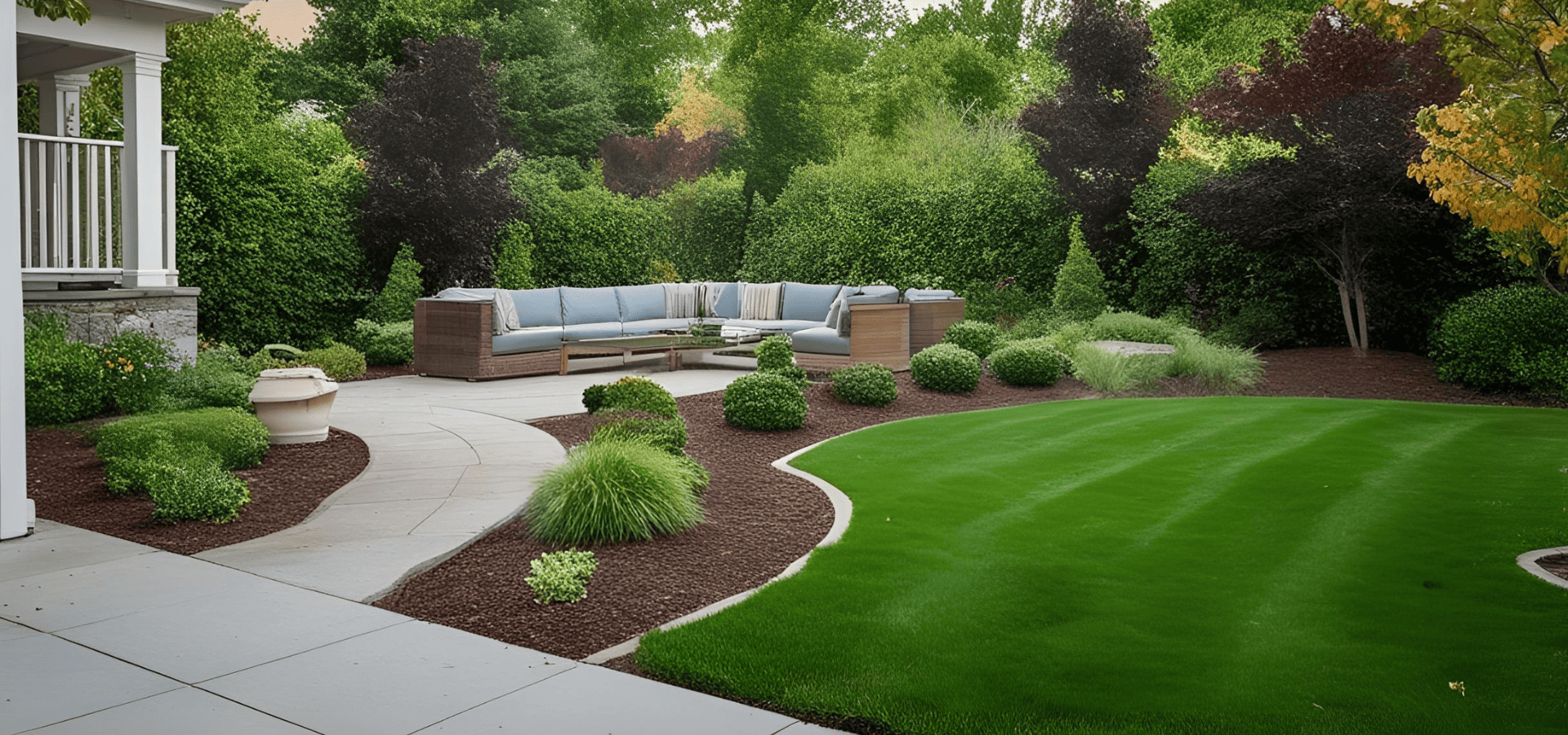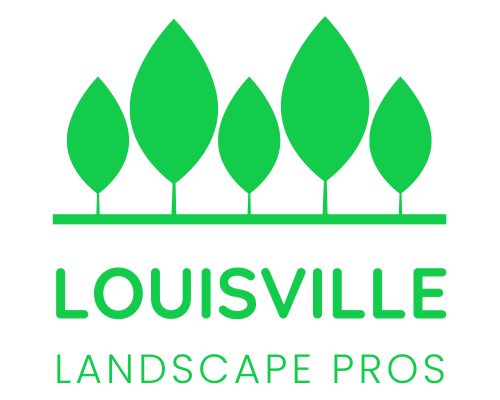How To Choose The Right Water Feature For Your Landscape
If you don’t already have a water feature in your landscape, what are you waiting for?
Water features elevate the look of any landscape, no matter what your style or aesthetic is, as long as you’re choosing the right water feature.
Maybe you’re thinking “Oh, a fountain wouldn’t fit in my minimalist landscape” or “A waterfall won’t do much good for my cottage garden”.
Well, there’s actually a very diverse range of water features to suit just about any aesthetic and take it to the next level.
If you don’t have a water feature, you’re missing out. From the grandest landscapes to quiet minimalist ones, any outdoor space will benefit from the serenity and soothing sound of water flowing.
For those in search of the perfect water feature for their landscape, you’re in the right place. Let’s get started.
Water Feature Types
First, let’s quickly go over the various water feature types available for you to choose from.
1. Fountains
Everyone knows what fountains are.
Out of all water features, fountains are the most versatile and customizable.
Fountains can come in all sorts of shapes and sizes, which also means that they can be customized to fit a variety of aesthetics.
Despite this, even the simplest fountains tend to look man-made, so despite their versatility, there are still landscapes where more natural-looking water features are more apt.
2. Waterfalls
Waterfalls are usually more grand and majestic, no matter how simple you try to make them.
This inherent grand look makes waterfalls perfect for acting as focal points or to complement grand landscapes like luxury outdoor spaces.
3. Streams
Streams are the opposite of waterfalls. They bring a very quiet, soft, peaceful vibe, making them perfect for serene landscapes like Japanese Zen gardens.
4. Ponds
Ponds bring a natural vibe to the table. They’re usually not grand or modern, but they simple look natural, and most ponds tend to have similar aesthetics.
As such, ponds tend to fit best in less modern spaces like cottage gardens.
5. Reflecting Pools
Reflecting pools are, as the name suggests, pools that reflect light, almost like mirrors. These pools are meant to invoke feelings of reflection and deep thought, and they give off serene, elegant vibes.
6. Birdbaths
Birdbaths are literally for birds to bathe and drink from, thus the name.
Birdbaths bring a rustic, countryside charm to your outdoor space, making them perfect for rustic landscape styles like cottage gardens.
7. Water Walls
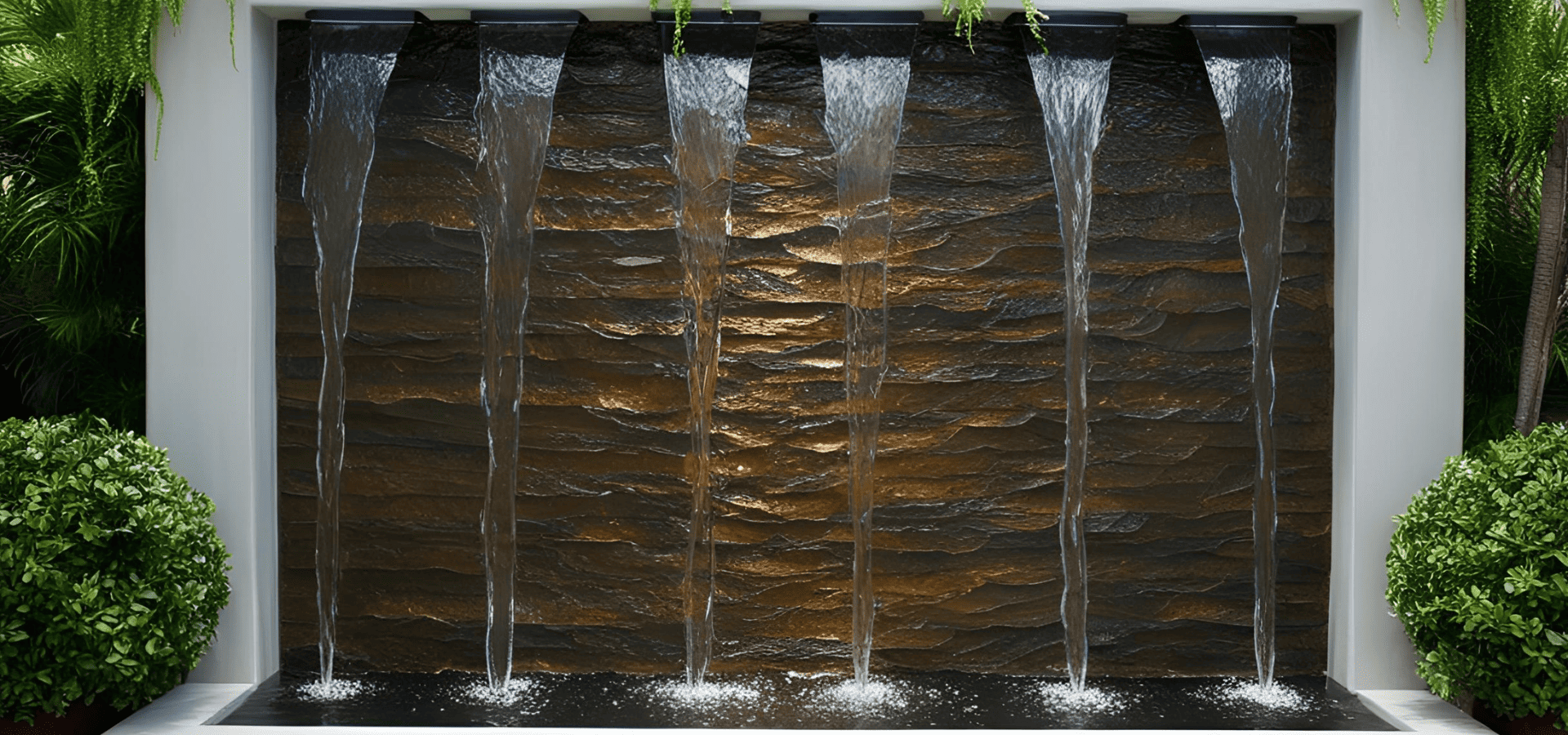
Water walls are, as you’d expect, walls with water flowing down. While water flowing down a wall may not sound like much, water walls, while simple, bring a layer of sophistication and modernity to an outdoor space.
Water walls are a modern water feature, so they look best in modern landscapes.
All in all, as you can see, each water feature brings with it a specific aesthetic and charm. With such a wide range to choose from, there’s definitely going to be one to fit your aesthetics, whatever landscaping style you may have.
Now, let’s go over which ones to use for each landscaping style.
1. Minimalist Landscapes
Clean lines and neat shapes are key characteristics of minimalist landscapes, so it goes without saying that the same applies for your water features.
You want clean lines for your water features, so you definitely don’t want features like streams or ponds.
Instead, you’ll want sleek, neat water features like:
- Fountains: Modern fountains with simple, clean designs, made with metal or smooth concrete
- Water Walls: Water walls, with their simple, modern minimalist aesthetics, are perfect for minimalist spaces. To bring out their full potential, outfit your water wall with modern soft lighting.
- Reflecting Pools: Reflecting pools featuring modern designs and simple, clean shapes like circles, ovals, or rectangles and squares
While you don’t want your water feature to draw too much attention, as that would ruin your quiet, minimalist aesthetics, you still want it to stand out a little and add to your overall aesthetics.
To achieve that, you can’t have other features nearby stealing its limelight. As such, make sure to keep the area around your minimalist water features clear of other distracting elements.
Reducing clutter is also in line with your minimalist aesthetic, so that’s another reason to keep your space neat and free of clutter.
2. Cottage Gardens
Given that cottage gardens are supposed to make you feel like you’re in the countryside, modern water elements like modern fountains and living walls should be strictly avoided.
Instead, go for rustic water features like birdbaths, ponds, and stone fountains.
And of course, you should be opting for rustic, older-fashioned designs rather than modern ones.
For cottage gardens, they’re the opposite of modern minimalist landscapes. Instead of keeping the area around them clean, you should be surrounding them with wild, almost messy plants like wildflowers.
3. Mediterranean Landscapes
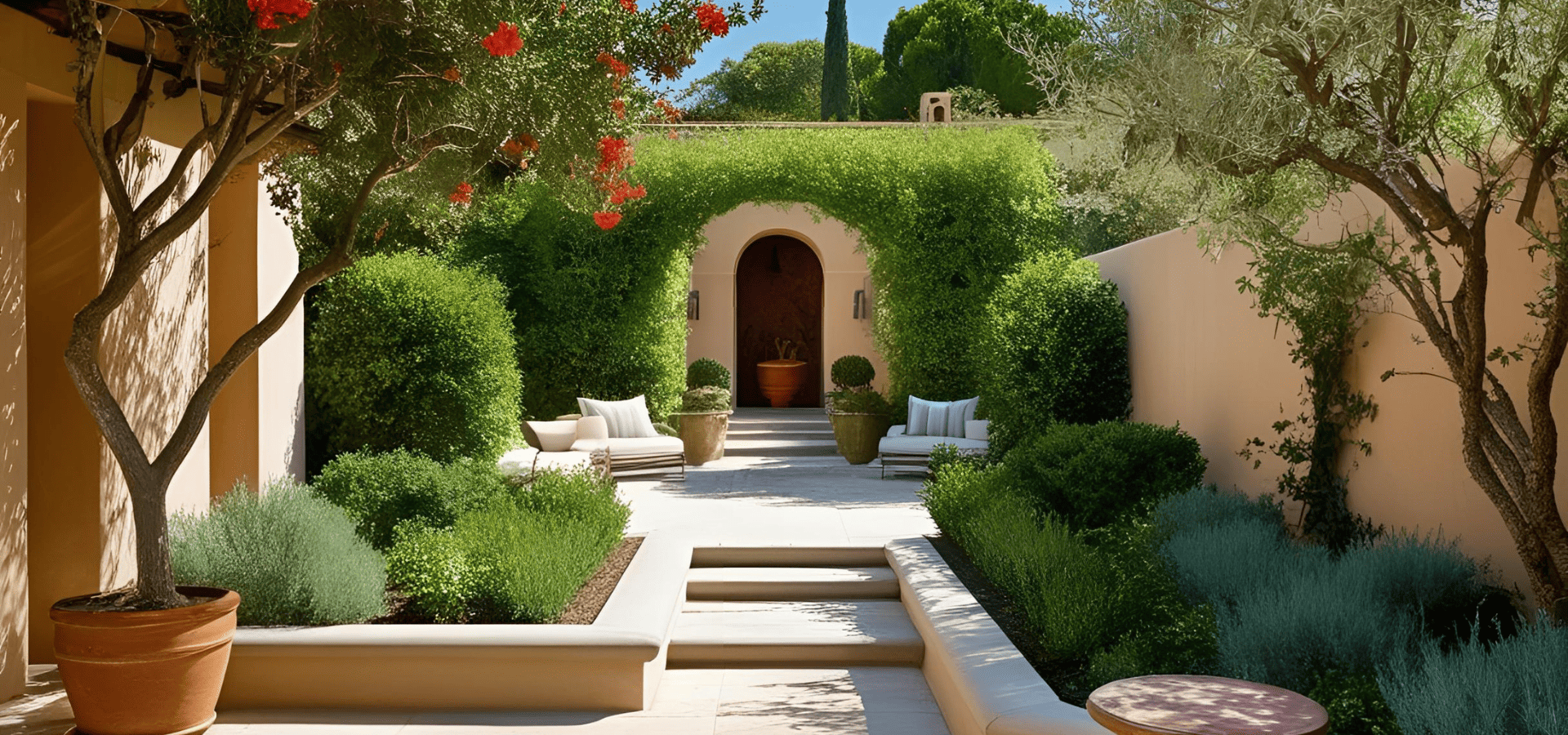
Mediterranean landscapes are somewhat like cottage gardens in the sense that they both have less modern, more rustic vibes.
For Mediterranean landscapes, despite their less modern vibes, they usually have a more sophisticated look than cottage gardens.
As such, for your water features, they shouldn’t be simple ones like birdbaths or ponds. Instead, go for water features that are old-fashioned but have more depth to them.
Here are some good examples:
- Tiered Stone Fountains: Tiered stone fountains are a classic in Mediterranean landscapes. Their design has a little sophistication so they’re not too simple and more importantly, there’s a subtle grand element.
- Mosaic-Tiled Fountains: Mosaic-tiled fountains add a layer of depth while not being overly fancy or too simple.
- Rustic Stone Water Walls: While water walls are usually a modern element, when made with stone and designed to appear rustic, they’re a great addition to Mediterranean landscapes. There’s a little modernity in that it’s a water wall, which adds to its sophistication, and the stone and rustic design ensure that its aesthetics still remains in line with Mediterranean landscapes.
4. Formal/Traditional Landscapes
Formal and traditional landscapes are one of the most commonly seen landscaping styles. They’re kind of in the middle for every aspect. They’re not too modern, not too minimalist, and not too loud or soft visually.
Basically, they have a timeless, soft elegance. Something that’s beautiful to look at can wear your eyes out over time, but something that’s subtly beautiful won’t.
Similarly, your water feature should achieve a balanced aesthetic. It should be nice to look at, but not overly flashy or bold.
Some great candidates are:
- Tiered Fountains: Again, tiered fountains aren’t too plain or simple, but not overly grand either.
- Statue Fountains: Statue fountains are another great water feature that’s nice to look at, but won’t wear out the eyes. The statue or sculpture serves to give the water feature something to enhance its aesthetics, but the rest of the fountain remains plain and simple to balance it out.
- Ornamental Water Basins: Ornamental water basins are a little on the simpler, less sophisticated end. However, they have a regal timelessness that makes them perfect for traditional and formal landscapes.
5. Japanese/Zen Gardens
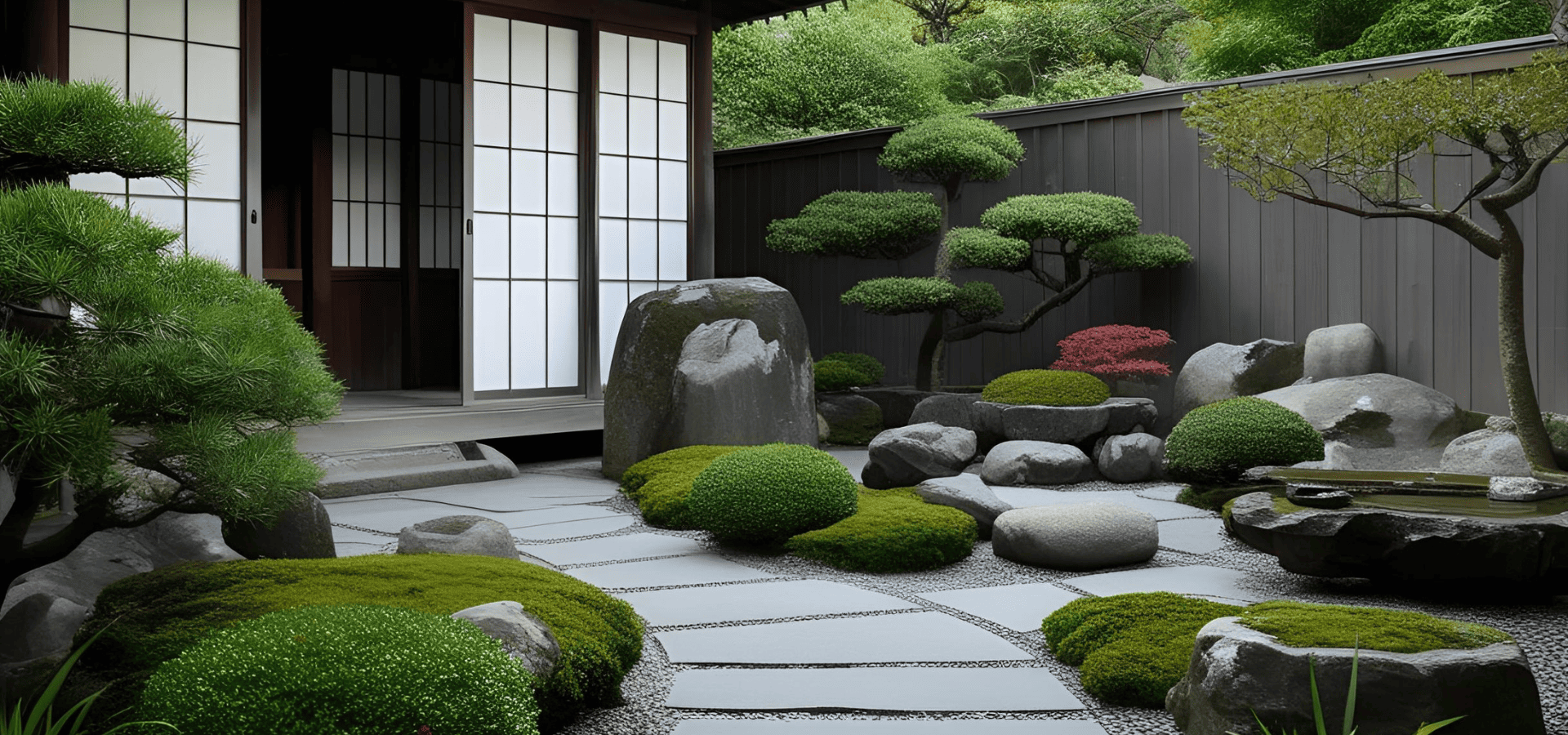
Japanese gardens and Zen gardens place a huge focus on tranquility and serenity. The whole purpose of a Japanese or Zen garden is to facilitate quiet contemplation and relaxation.
Japanese and Zen gardens are supposed to be a quiet retreat, an escape from everything else.
In terms of aesthetics, Japanese and Zen gardens focus on simplicity. There aren’t any particularly sophisticated elements.
Instead, simple elements are used so that visitors don’t get distracted by anything too fancy or complicated. This ensures the space is free of distractions and visitors can focus on thought and contemplation.
The elements also arranged neatly. Not exactly minimalist, but close to minimalism. Japanese and Zen gardens need to be free of clutter, as clutter only serves to distract visitors.
So your water features need to also do the same. They should be neat and simple, yet induce calm and tranquility.
Here are the best water features for Japanese and Zen gardens:
- Streams: Streams are one of the simplest water features, and their simple, natural design means that visitors won’t even see it as a focal point. Instead, the gentle flow of streams along with their unassuming aesthetic helps them guide people’s thoughts and facilitate thinking rather than distraction.
- Koi Ponds: Similar to streams, the simple design of ponds and the gentle, constant movement of koi fish helps facilitate contemplation.
- Japanese Stone Basins: Japanese stone basins are stone basins filled with water and usually of a low height. They’re outfitted with bamboo ladles for users to scoop water to wash their hands and mouth. These unassuming water features won’t really facilitate thought, but they won’t distract visitors and they help enhance your overall aesthetics.
Final Tips
As you’re going about choosing your water feature, once you’ve found the ideal one for your space, remember to position it correctly too to avoid wasting its potential.
The placement or position will depend on the purpose of your water feature. If it’s meant to be a focal point, you’ll want to place it somewhere prominent and make sure it can be clearly seen.
And if it’s meant to be more more unassuming, you’ll want to position them somewhere where it won’t stand out too much.
And of course, remember to perform the required maintenance regularly.
For larger water features or those that require more complex installation, it’s also a good idea to engage licensed professionals like
Lousville Landscape Pros to ensure the installation is done properly.
You might also like
